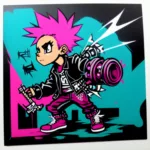Ah, Reggae and Dub. Two of the most beloved musical genres that have graced our eardrums since the 1950s. From the tropical island of Jamaica to the furthest reaches of the globe, these genres have captured the hearts of millions. So sit back, relax, and let me take you on a journey through the history of Reggae and Dub.
It all began with Mento, a Jamaican folk music that emerged in the 1940s and 1950s. But it wasn’t until the 1960s that Reggae began to take shape. With its slow, jerky rhythm and militant and spiritual lyrics, Reggae was a cultural bombshell that exploded onto the music scene. And as the music evolved, so did the themes of its lyrics, shifting from love to heavy Rastafarian influence.
By the 1970s, Reggae had become an international style, particularly popular in Britain, the United States, and Africa. It was even perceived as a voice of the oppressed. And who can forget the legendary Bob Marley, who helped put Reggae on the map and became a planetary icon?
But let’s not forget about Dub, the rebellious cousin of Reggae. Dub music has key characteristics distinguishing it from Reggae, including the absence of lead vocals and a raw, impactful sound. Dub takes Reggae and breaks it down, delivering it in a way that is nothing short of mind-blowing. It’s no wonder that Dub has been influencing music and musicians since its inception.
Now, here we are in 2023, and Reggae and Dub are still going strong. These genres have come a long way since their humble beginnings in Jamaica. They’ve influenced countless musical genres, cultures, and societies throughout the world. And let’s not forget about the amazing artists that have graced us with their talent over the years, like Lee “Scratch” Perry, Augustus Pablo, and King Tubby, just to name a few.
So, there you have it. A brief history of Reggae and Dub from 1950 to 2023. These genres have stood the test of time and continue to captivate audiences with their infectious rhythms and rebellious spirit.










